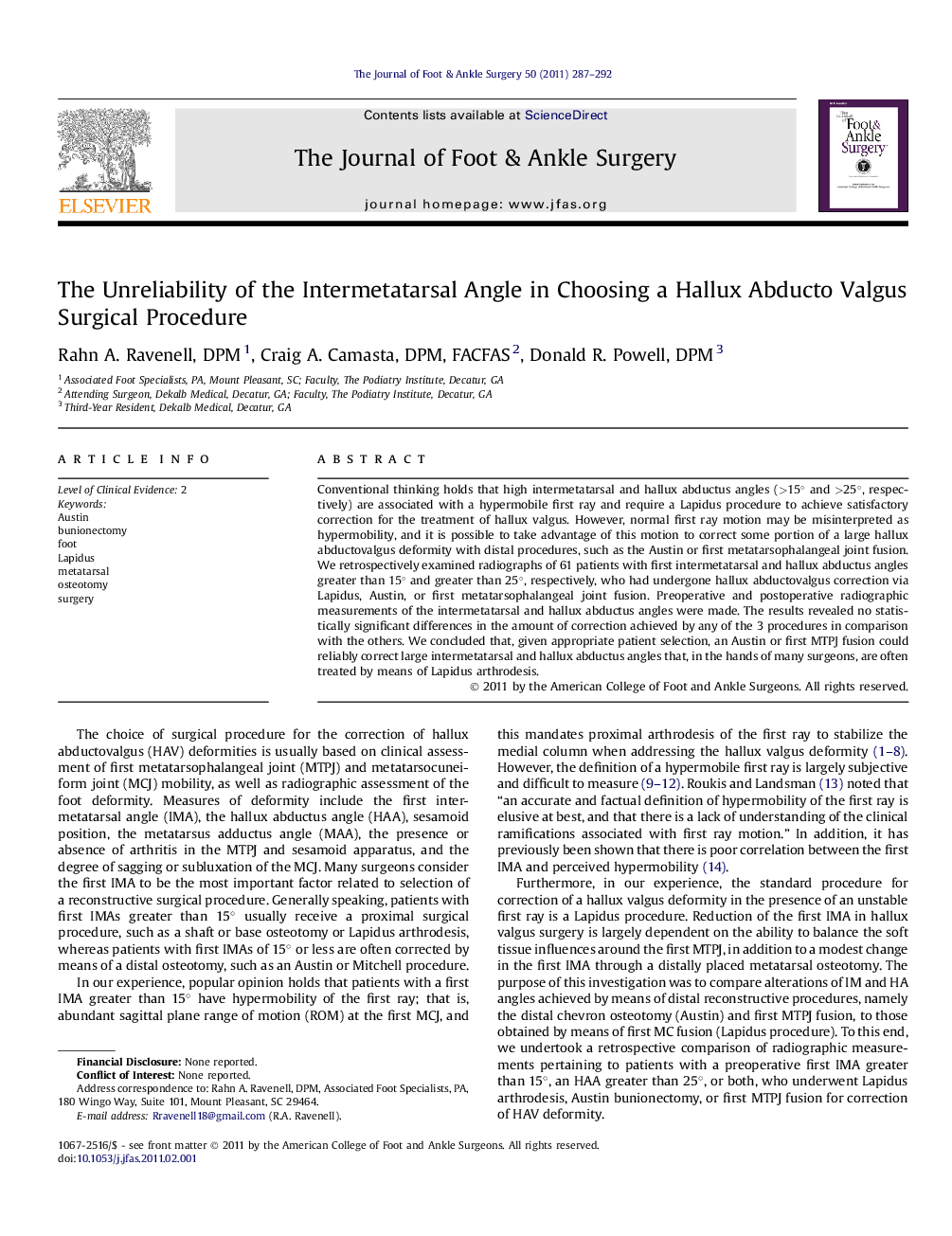| Article ID | Journal | Published Year | Pages | File Type |
|---|---|---|---|---|
| 2713372 | The Journal of Foot and Ankle Surgery | 2011 | 6 Pages |
Abstract
Conventional thinking holds that high intermetatarsal and hallux abductus angles (>15° and >25°, respectively) are associated with a hypermobile first ray and require a Lapidus procedure to achieve satisfactory correction for the treatment of hallux valgus. However, normal first ray motion may be misinterpreted as hypermobility, and it is possible to take advantage of this motion to correct some portion of a large hallux abductovalgus deformity with distal procedures, such as the Austin or first metatarsophalangeal joint fusion. We retrospectively examined radiographs of 61 patients with first intermetatarsal and hallux abductus angles greater than 15° and greater than 25°, respectively, who had undergone hallux abductovalgus correction via Lapidus, Austin, or first metatarsophalangeal joint fusion. Preoperative and postoperative radiographic measurements of the intermetatarsal and hallux abductus angles were made. The results revealed no statistically significant differences in the amount of correction achieved by any of the 3 procedures in comparison with the others. We concluded that, given appropriate patient selection, an Austin or first MTPJ fusion could reliably correct large intermetatarsal and hallux abductus angles that, in the hands of many surgeons, are often treated by means of Lapidus arthrodesis.
Related Topics
Health Sciences
Medicine and Dentistry
Orthopedics, Sports Medicine and Rehabilitation
Authors
Rahn A. DPM, Craig A. DPM, FACFAS, Donald R. DPM,
